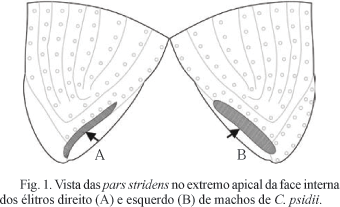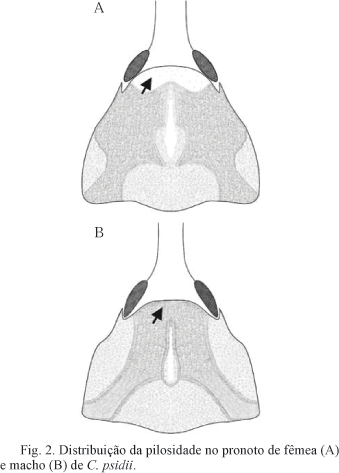We investigate structural and behavioral differences between male and female adults of guava weevil, Conotrachelus psidii Marshall, 1922 to help in sex determination. Weevils collected from a commercial guava orchard were individually caged and maintained under laboratory conditions. Every day ten individuals were grouped and their behavior was observed. During mating the males and females were identified. Fifty weevils of each sex were killed and they were observed with stereoscopic microscope. The antenna insertion on the rostrum and hair on the thorax and abdomen surfaces were examined. Length and width of body, pronotum, last abdominal sternite and rostrum were also taken. Behaviorally, the male weevils produce audible sound by stridulation of abdomen while females do not. In the females, the body and pronotum width and body a rostrum length were higher than in the males, but the last abdominal sternite was smaller. Three other structural differences were visible with the naked eye: 1) the anterior region of pronotum have scarce hair or have not in the females and hair is dense in the males; 2) the last tergite of females is hidden by the penultimate tergite whereas in the males is visible; 3) the first abdominal sternite of females is more prominent, very convex and without or with little bristle. In the males it is slightly concave and with abundant hair. The male-female differences found in this work allow, without hurt or change insect behavior, an efficient sex determination of guava weevil.
Sex differentiation; curculio; stridulation





